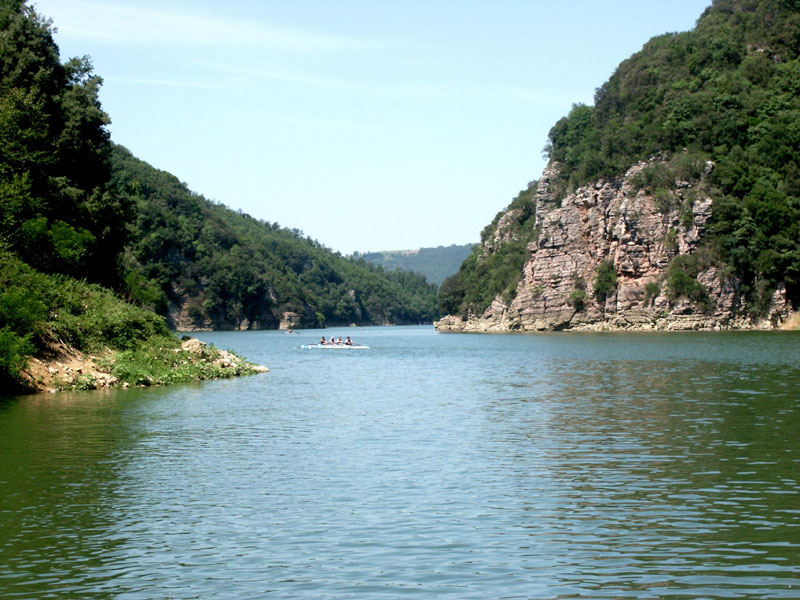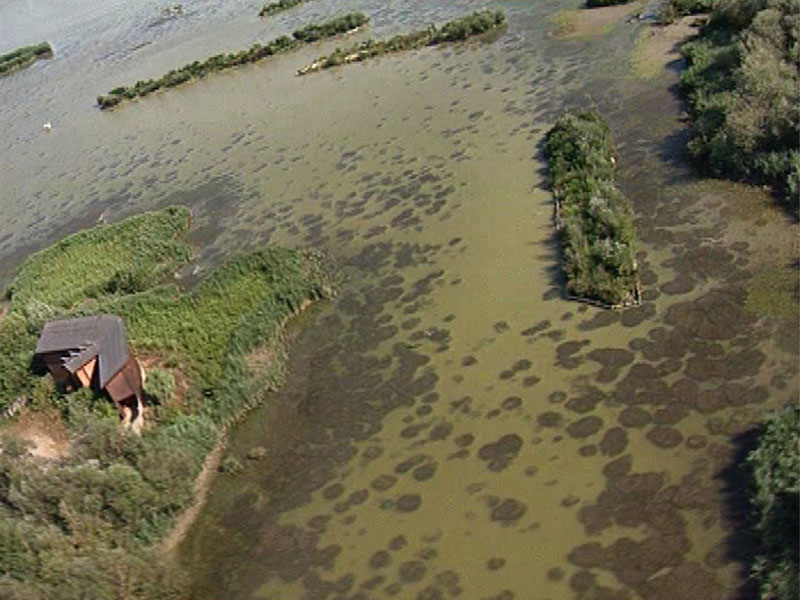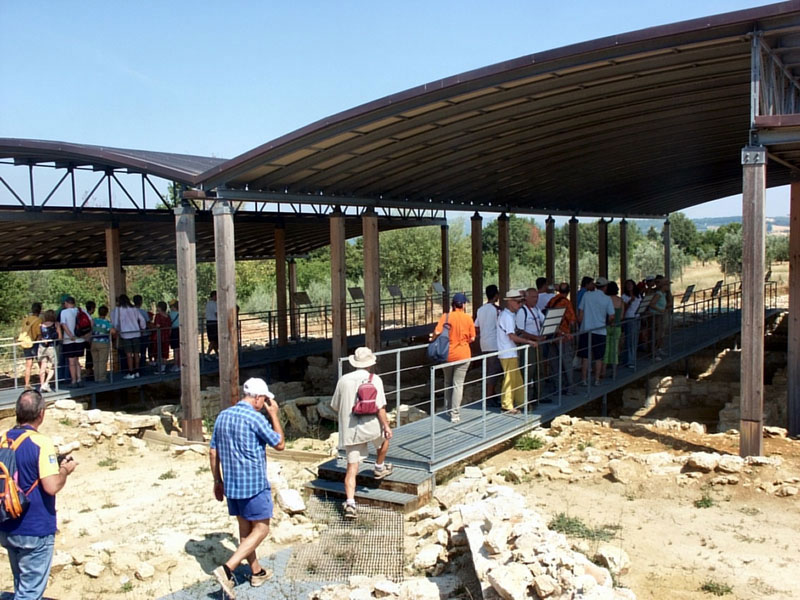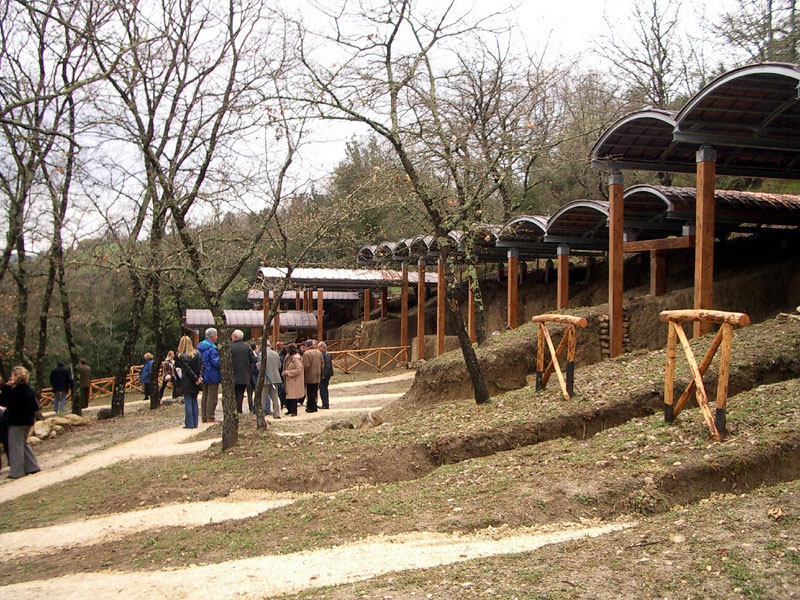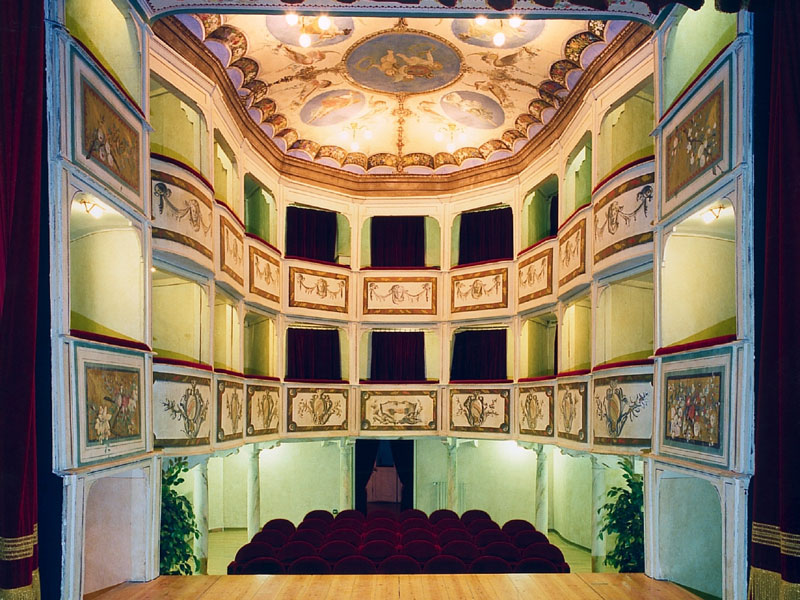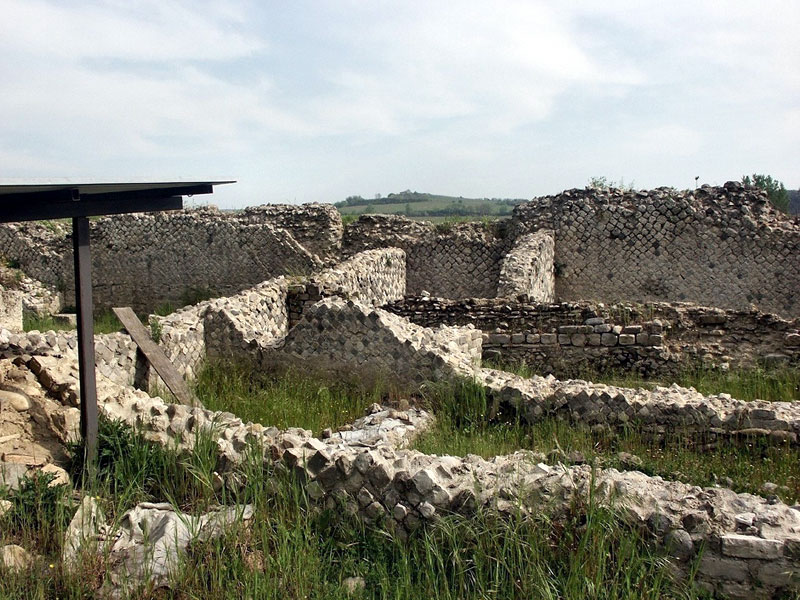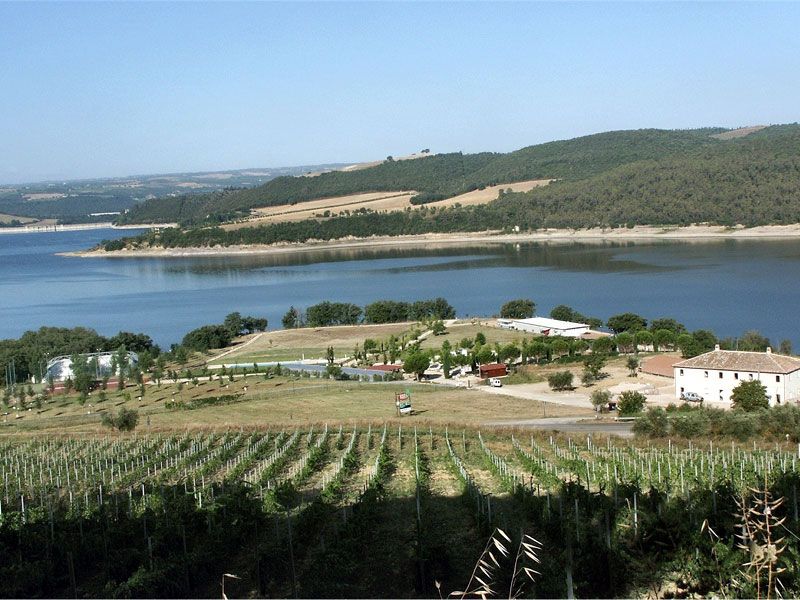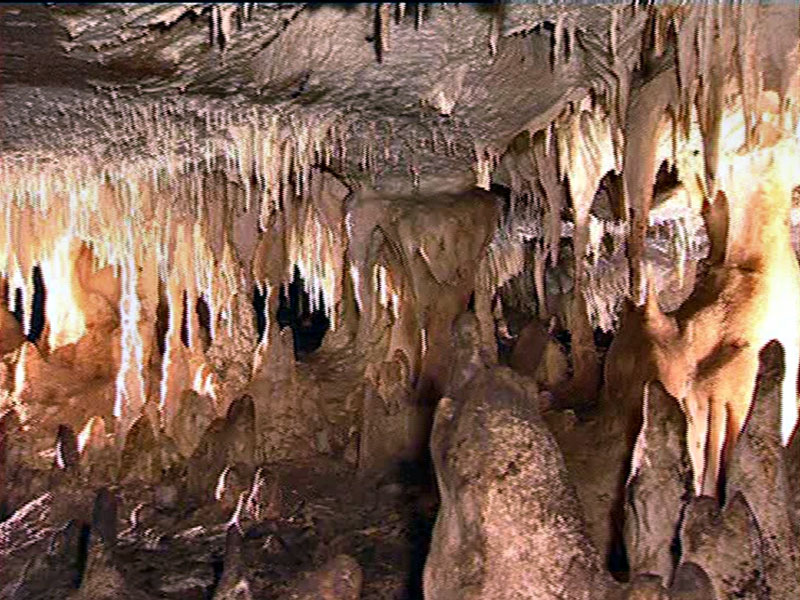Points of Interest
Natural and Historical-Cultural Features
Forello Gorges
A stretch of the Tiber watercourse between the area in the south-east of Todi and Corbara Lake runs between high and indented banks. The gorges are set between the ridges of Peglia and Croce di Serra mountains. The calcareous nature of the mountains leads to the formation of deep circular abysses looking like swallow holes. These mountains, during the Tertiary and Quaternary periods, delimited the big Tiberino Lake.
Alviano Nature Sanctuary
In 1963, after the barring of the Tiber by ENEL for the production of electric energy, Alviano Lake gradually took shape. In a few years, thanks to the deposits gradually transported by the river, this stretch of water changed to the extent that large and significant marshy areas formed. The water is rich in mollusks, phytoplankton, aquatic insects, and several fish species that find here the ideal habitat to lay eggs. This is an ideal area for the passage and nesting of a varied avifauna. There are over 160 species of birds, partly resident, partly migratory.
The Nature Sanctuary is managed by WWF Italia: www.oasidialviano.it - Tel. +39 0744 903715 - +39 333 7576283.
'La Fornace': Scoppieto di Baschi Archaeological Site
Evidences of the importance of the Tiber in the historical-economic reality of the territory both in the pre-Roman and Roman period are the archaeological finds of Scoppieto, near Civitella del Lago, where the rests of a place of worship and a Roman ceramics factory have been brought to light. This settlement producing refectory ceramics dates back to the first period of the Roman Empire. Such objects were transported on boats leaving from the ports along the Tiber and reaching Ostia, where they were re-embarked to Africa and transported to Carthage, Alexandria of Egypt, Costantina. The material found is on display in Baschi Antiquarium. The visits to kiln and the antiquarium are managed by "Sistema Museo".
Naturalistic and Archaeological Area, Umbrian-Etruscan Tombs in Vallone di San Lorenzo in the Municipality of Montecchio
In the 1980s, in loc. Fosso di San Lorenzo, a very large Umbrian-Etruscan necropolis (dating back between 6th and 4th century BC) was discovered. It is made of 3,000 tombs which represent the evidence of the presence of a big settlement - that has not been found yet - near the river Tiber, where trading activities between the Etruscans and Italics were carried out (probably the town of Copio). The area of the necropolises has been recently interested by enhancement measures which gave the opportunity to create trails, services, and documentation material. The finds are on display in Tenaglie Antiquarium.
Teatro della Concordia
The smallest theater in the world is situated in Montecastello di Vibio. It is a real jewel with a unique structure, since it is middle way between the 16th century theater structures and the characteristic Italian theater. Planned and built in the age of Enlightenment atmosphere thanks to the initiative of some local families, it is the "smallest theater in the world" (96 seats including boxes and stalls). The theater, closed in 1951, was opened again only in 1993 after careful restoration works. Today the structure is perfectly working and has all the comforts characterizing a big theater.
Pagliano Roman Port in the Municipality of Orvieto
It is the most famous port along the Tiber, crossroads of the trading activities between the inland and Rome, situated at the confluence with the river Paglia. It represents one of the most interesting Roman archaeological sites. The structures found do not only belong to the port, but also to a series of premises, some of which were probably used as warehouses.
Documentation Center of Parco fluviale del Tevere and Tourist-Sports Center with recreational and cultural facilities in loc. Belvedere - Salviano, in the Municipality of Baschi
The structure consists of several buildings and facilities linked to the management of spare time activities, sport activities, as well as cultural and documentation activities. The Tourist-Sports Center has housed for years the "Tiber-Thames International Canoe Races", then Canoeing International Races Tiber - European Rivers and Lakes organized by the Park, and F.I.C. national championship races.
Piana Caves
These caves were already probably known in ancient times. They open near Forello Gorges in location La Roccaccia di Titignano. The soil consists of travertine formations. The main cave is the largest cave existing in Italy in this kind of rock and develops for over 2,500m. Very beautiful for their concretions, they are also important for their documentary value given by the archaeological and paleontological finds probably dating back to the middle Neolithic period, like lithic objects, bone rests, and ceramic pieces. The gallery has a mainly labyrinthian development. Of particular interest is the so-called "Sala dei Vortici", populated by bats. The caves can be visited together with speleological guides (Gruppo Speleo Todi).
Further Caves
- Vergozzino Cave. The cave opens at about 200m
from Scoppieto archaeological excavations and is a training camp for
the young CAI speleologists.
- Vergozzo Abyss.
It is a karstic cavity formed by a sort of swallow hole. It is situated
near Civitella del Lago, in the middle of a chestnut tree wood.
- Fosso di Callarano. In the same area there is a swallow hole called Callarano or
Callaruccio, characterized by a particular phenomenon taking place when
there are particular weather conditions: as a matter of fact, when the
temperature pressure varies, a column of vapor comes out of its mouth.
Local people use this phenomenon to make weather forecasts.
- Buche del Vento. Situated along a trail connecting Civitella del Lago with Morruzze, in the south of Vallone della Pasquarella, they are four/five cavities (horizontal and vertical) opening on the slope of Mt. Citernella, whose feature is to let out air due to the movement of underground stream currents feeding wells of drinkable water which are currently used for the aqueducts of lower Umbria.


